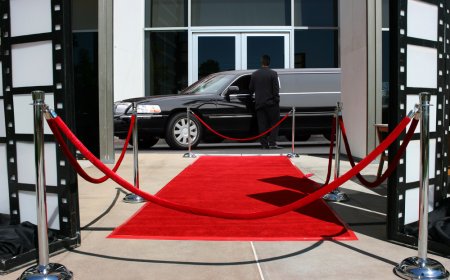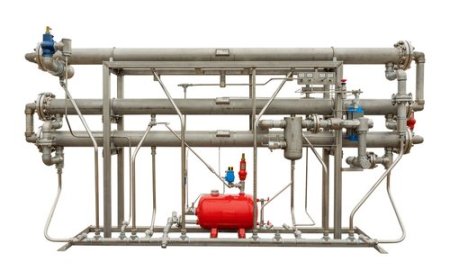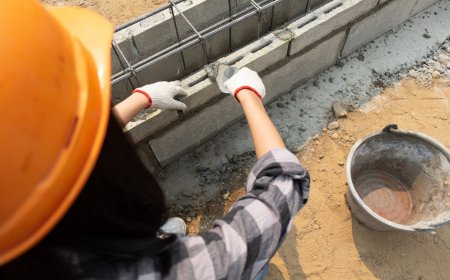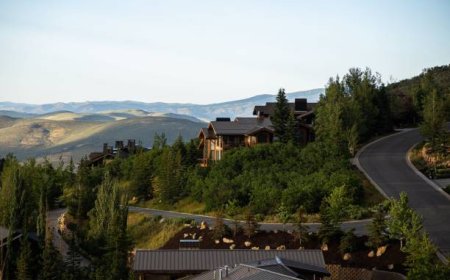How to Hire a Reputable Guide and Porter for Your Everest Base Camp Trip
Trek to Everest Base Camp and stand beneath the world’s highest mountain – a life-changing experience for all adventurers.

Getting a good guide and porter for your trek to Everest Base Camp is really important for staying safe, soaking up the culture, and having a comfortable trip. A licensed guide knows the trails, helps with altitude sickness, keeps an eye on changing weather, and shares local insights. Having a porter to carry your stuff makes it easier to enjoy the trek, especially when things get steep.
Everest Base Camp Trek Itinerary When you're looking to hire, make sure your guide has a government license and is trained in first aid and altitude safety. Good trekking companies in Nepal usually have certified and experienced guides, along with insured porters. Be cautious of prices that seem too lowit could mean the staff isn't well paid, insured, or experienced.
Check if the agency youre considering is registered with TAAN or NMA. Look for online reviews, ask for references, and get everything confirmed in writing. A solid agency will be clear about costs for wages, food, lodging, insurance, and gear for the guide and porter.
If you want to save money, you could hire someone independently, but it can be riskier if you dont have the right paperwork and insurance sorted out. Good communication is really importantchoose a guide who speaks your language and knows how you like to trek.
Expect to pay about $2535 a day for a porter and $3050 a day for a guide, depending on their experience and what services they offer. Tips are always appreciated.
Finding a trustworthy guide and porter means less stress for you, a richer cultural experience, and more time to enjoy the adventure of trekking to Everest Base Camp.
Why You Should Consider a Guide and Porter for the Everest Base Camp Trek
Getting a guide and porter can really improve your trip to Everest Base Camp. A guide helps keep you on track, helps you adjust to the high altitude, and shares interesting facts about the local culture in the Khumbu area. A porter can carry most of your gearabout 20-25 kgso you can hike with a lighter pack, making the trek easier on you. They also provide support in case something goes wrong. While you can trek alone, having a licensed guide makes it much safer and helps you enjoy the experience more. Plus, hiring porters through ethical channels supports local tourism. Whether youre a newbie or a seasoned trekker, working with both a guide and a porter can make your journey safer, more enjoyable, and culturally richer.
How to Check if a Guide Is Licensed and Experienced
Its really important to hire a licensed guide for the Everest Base Camp trek to keep things safe and trustworthy. Always ask to see their government-issued guide license and check it with the Trekking Agencies Association of Nepal (TAAN) or the Nepal Tourism Board (NTB). Good guides usually have training in first aid and altitude sickness, as well as mountain leadership. Make sure they have experience in the Everest area. Ask how often theyve done the trek and for references or reviews online. A licensed guide can also help with permits and logistics. Be cautious with unlicensed or freelance guides, as they might not be ready for emergencies. Checking their credentials helps ensure youre trekking with someone who is professional and knows the area.
Questions to Ask Before Hiring a Trekking Guide
Before you decide on a guide for your Everest Base Camp trek, ask a few important questions to gauge their experience and if theyre a good fit. Start by asking how many times theyve led the EBC trek and if they have the proper license and insurance. Find out about their training for dealing with altitude sickness and first aid, and whether they can speak your language. Ask about their daily plan, how they handle emergencies, and what their fees cover (like accommodations and food). Its also key to know how they feel about tips and their working hours. A good guide should be patient, clear, and able to adapt to your own pace and fitness. Being clear with your questions helps make sure youre hiring someone you can rely on for your trek.
How Much Does It Cost to Hire a Guide and Porter in Nepal?
Hiring a guide and a porter in Nepal is pretty affordable compared to other places. On the Everest Base Camp trail, a licensed guide usually charges between $30 and $50 per day, depending on their experience and language skills. A porters fee is typically around $20 to $35 per day, and they can carry up to 25 kg. These costs generally include food, lodging, and insurance for the guides and porters, especially if you go through a registered agency. While hiring independently might seem cheaper, they might not have insurance or support. Tipping isnt mandatory, but its appreciatedabout $5-$10 a day for guides and $3-$7 a day for porters is a good estimate. Prices can change based on the season and the extent of services offered. Always check whats included in the fee to avoid surprises later.
Should You Hire a Guide Through a Travel Agency or On Your Own?
You can hire a guide through a trekking agency or go for an independent option, and each has its ups and downs. Agencies give you vetted and insured guides and often handle permits and logistics for you, which can be reassuring for first-time trekkers. Hiring on your own might save some cash, but it can come with more riskssome freelance guides may not be fully licensed or insured. If you go independent, make sure your guide is certified and has experience with high-altitude treks, and try to get recommendations. Agencies can also offer quicker help in emergencies, while independent guides might lack that support. For the best mix of reliability and safety, especially in challenging spots like Everest Base Camp, most people lean toward using reputable local agencies. But experienced travelers with good local ties might enjoy the flexibility of hiring directly.
What Are the Risks of Hiring an Unlicensed Guide or Porter?
Hiring someone without a license for the Everest Base Camp trek can lead to some big problems. These unlicensed folks often dont have proper training in first aid or how to handle altitude sickness, which can put your safety on the line. They might also not have insurance, meaning you could be responsible if they get hurt. Plus, without proper registration, its tougher to hold them accountable in case something goes wrong, like theft or if they abandon you. They might also have issues going through checkpoints or getting permits. Even if they quote lower prices, the risks arent worth it. Always check for official licenses, valid IDs, and look for reviews or referrals. To stay safe, hire through a well-regarded agency or a reputable independent guide.
How to Ensure Porters Are Treated Fairly?
Ethical trekking is about making sure your porters are treated well and paid fairly. Pick agencies that are part of groups like Porters Progress Nepal (PPN) or the International Porter Protection Group (IPPG), which look out for their welfare. Ask if the porters pay includes meals, accommodation, and health insurance. They should carry no more than 2025 kg to keep them safe. You can help by packing light and respecting their limits. If you can, offer warm clothing or gear, especially in colder weather. Tipping well and recognizing their hard work means a lot. When you go with responsible companies, it helps ensure porters have better conditions and supports sustainable tourism. Treating porters well not only protects them but also makes the trek better for everyone.
What Is the Porter-to-Trekker Ratio on the Everest Base Camp Trail?
Usually, the porter-to-trekker ratio on the Everest Base Camp trek is about 1 porter for every 1-2 trekkers, based on how much youre carrying. A porter can carry around 20-25 kg, which is generally the bags of one or two people. If youve got heavier stuff or extra gear, like camera equipment, its best to hire one porter per person. Groups that have guides might have a support team of a couple of porters and a guide, depending on size. Keeping the ratio low means your porter isnt overloaded and helps their working conditions. Check with your agency before the trek to understand weight limits and pack accordingly. A good porter-to-trekker balance is key to fairness, safety, and efficiency during your trip.
What Are the Responsibilities of a Trekking Guide vs. a Porter?
Knowing the difference between a guide and a porter is crucial when hiring help. A guide leads the trek, manages the itinerary, helps with permits, shares cultural insights, and deals with emergencies. They usually speak English and are trained in first aid, with experience in high-altitude trekking. A porter solely carries your main luggage (up to 25 kg), allowing you to hike with a lighter daypack. Porters typically dont speak much English and dont handle navigation or decision-making. Sometimes you can find a porter-guide who does basic work in both roles, but theyre best for solo or budget trips. Hiring each separately is a better way to ensure safety, comfort, and a rewarding experience on the trail.
How to Book a Guide or Porter in Advance?
Its a good idea to book a reliable guide or porter ahead of time, especially during busy trekking seasons (March to May and October to November). Start by looking up licensed trekking agencies in Kathmandu or Pokhara. Make sure theyre registered with TAAN or NTB, and check out reviews on sites like TripAdvisor, Google, or trekking forums. Most agencies let you book online and communicate via email or WhatsApp. Ask for a detailed itinerary, a breakdown of costs, and verify the guide's or porters insurance and experience. If you want to hire someone directly, reach out to past trekkers or Nepali travel groups for trusted recommendations. Confirm names, certifications, and whats included in the price. Booking early helps you get a dependable team, avoid any last-minute stress, and lets you focus on getting ready for your trek.
How to Hire a Guide for the Everest Base Camp Trek
Hiring a guide for the Everest Base Camp trek is pretty straightforward if you know where to look. The best approach is to go through a licensed trekking agency in Nepal, ideally one thats registered with TAAN or NTB. These agencies train their guides, who are certified, insured, and experienced in trekking at high altitudes. You can also find guides on reputable online platforms or trekking forums. When booking, be sure to ask for the guides license number and check references or reviews. Some trekkers prefer to hire freelance guides, but just make sure theyre insured and certified. Its a good idea to book ahead during busy seasons to secure a reliable guide who will keep you safe and help manage the logistics, plus share insights about the local culture.
Do I Need a Porter for Everest Base Camp?
While its not a must, getting a porter for the Everest Base Camp trek is highly recommendedespecially if you want to enjoy the trek without the hassle of carrying heavy gear. A porter can carry about 2025 kg, usually your duffel or backpack, so youre left with just a light daypack for water and snacks. The trail has steep climbs and long days at high altitudes, which can be tiring. Having a porter saves your energy and helps reduce the risk of injury, making the trek more enjoyable. Just make sure you hire them fairly, ensuring they get good pay and arent overloaded. If youre used to carrying a backpack and are fit, you might be able to manage without a porter, but most trekkers find the support well worth the cost.
How Much Does a Guide for Mount Everest Base Camp Cost?
Hiring a guide for the Everest Base Camp trek usually costs between $30 and $50 per day, depending on their experience and language skills, as well as whether you go through an agency or hire one directly. This rate typically covers the guides pay, accommodation, and meals, but it's best to check this before booking. Some agencies offer package deals that include permits, lodging, domestic flights, and guide services. Guides who speak multiple languages or have extra training may charge a bit more. Tipping is also commonaround $10 a day is appreciated. While it might seem like an extra expense, a good guide can boost your safety and overall experience during the trek.
Do You Need a Guide for Everest Base Camp?
You dont have to have a guide to the Everest Base Camp Trek package, but its strongly recommendedespecially if youre not experienced with high-altitude trekking or youre new to Nepal. Solo trekking is allowed, and many seasoned hikers do it on their own using maps or GPS. But having a licensed guide can be helpful for safety, local knowledge, and managing logistics. Guides can assist in emergencies, help find teahouse accommodation, manage permits, and share insights about the culture and environment. Theyre especially valuable if you face altitude sickness, bad weather, or language barriers. If you want to focus more on the trek than on planning, or just want some peace of mind, a guide can enhance your journey. Many trekkers find that having a guide makes their Everest Base Camp adventure much richer.














































